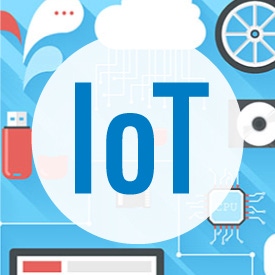
The 3GPP has taken a significant step towards defining a low-power LTE radio specification for Internet of Things (IoT) networking by agreeing on a "Work Item" that will form the basis for a final decision, but the industry body is not expected to define the complete specification before December.
Vendors and operators met to talk about future LTE developments and refinements at a 3rd Generation Partnership Project (3GPP) radio access network (RAN) working group meeting held in Phoenix, Arizona, last week. High on the agenda was thrashing out a standard radio specification for narrowband IoT (NB-IoT) communication, which has been dubbed a "clean slate" approach by some in the working group.
Two rival proposals -- Narrow-Band Long-Term Evolution (NB-LTE) and Narrowband Cellular IoT (CIoT) -- were under consideration and it seems elements of both have been incorporated into the Work Item.
"We entered the meeting with competing technology proposals for standardization," noted Dino Flore, Chairman of 3GPP RAN, in a blog post. "After lengthy discussions we came up with a harmonized technology proposal with very broad industry support ... It took us some twists and turns to get there, but we have now set a clear path in Release 13 to meet the needs of the 3GPP industry to further address the promising IoT market," added Flore.
There is good reason to develop such a specification. Devices such as smart sensors will need to maintain connectivity for years on a single battery charge and currently that connectivity is enabled via optimized 2G connections, Zigbee and WiFi. But network operators and vendors want to tweak LTE to enable its use in very low-power communications, while re-using as much of the existing 4G specs as possible.
Importantly, the upcoming NB-IoT specification is "particularly suitable for the re-farming of GSM channels," which refers to operators' plans to use current 2G spectrum for 4G/LTE services.
The 3GPP notes that the NB-IoT spec will enable "improved indoor coverage, support of massive number of low throughput devices, low delay sensitivity, ultra-low device cost, low device power consumption and optimized network architecture. The technology can be deployed 'in-band,' utilizing resource blocks within a normal LTE carrier, or in the unused resource blocks within a LTE carrier's guard-band, or 'standalone' for deployments in dedicated spectrum."
For more on LTE, visit the 4G LTE section here on Light Reading.
Alcatel-Lucent, Alcatel-Lucent Shanghai Bell, Ericsson, Intel, LGE, Nokia, Samsung, Sony, and ZTE have been backing the NB-LTE spec as their preferred solution. The group released documents to the 3GPP working group suggesting that the specification could be developed with Release 13 of the LTE spec. (See Ericsson, Intel, Nokia Back New Narrowband LTE IoT Spec .)
Meanwhile, Huawei, HiSilicon (owned by Huawei), Vodafone and others have been backing the CIoT spec. Huawei, which claims in a statement posted on its website to have "played the most important role during the standardization of NB-IoT", has previously said that this could be delivered as part of the Release 13 specification.
Release 13 is due to be "frozen" in March of 2016.
The 3GPP "forwarded the process for further evaluation, with a decision in December," a spokesperson for Intel Corp. (Nasdaq: INTC) told Light Reading following the Phoenix meeting. Intel is expecting to deliver its first chips for narrowband LTE in 2016.
Ericsson AB (Nasdaq: ERIC) says significant progress was made on the road to a single low-power LTE specification for IoT at the Phoenix meeting. Thomas Norén, head of product line, LTE, at Ericsson tells Light Reading: "The recent 3GPP agreement settles on many aspects, most importantly: There will be only one true low-cost alternative based on 3GPP technology; the harmonized track is to be specified for 3GPP Rel-13, where an LTE based approach is already confirmed for the higher protocol layers and interface to core network."
He adds, "Uncertainty remains on the uplink physical layer, which will be studied in RAN WG1 at 3GPP and decided in RAN Plenary in December."
The uplink options are: FDMA (Frequency Division Multiple Access) with GMSK (Gaussian Minimum Shift Keying) modulation; and SC-FDMA (single carrier FDMA).
OFDMA (Orthogonal Frequency-Division Multiple Access) will be specified for the downlink.
This might all seem like dry, technical detail, but a harmonized narrowband LTE specification is crucial if the vision of delivering millions upon millions of networked connected devices is to be realized: These are the details that will inform the development of the chipsets and modems that could power a substantial portion of IoT traffic in the future.
— Dan Jones, Mobile Editor, Light Reading
About the Author(s)
You May Also Like











